The Covid crisis has seen a huge move away from in-store shopping to online purchasing and click and collect. In a post pandemic world, the design of shops, department stores and retail developments will play a bigger role than ever in enticing customers back into stores.
As the UK retail sector swings back into action following the easing of lockdown it’s obvious that there is still a huge appetite for retail therapy amongst the British public. But things have changed. Shoppers now want safety and space as well as an immersive shopping experience. Choosing the right glazing package can help achieve this.
The use of glazing is a core design feature for retail buildings, allowing companies to showcase their wares to passing customers. The key to success for any new retail build is specifying fenestration packages that meet the sector’s complex performance characteristics, but which still allows retailers to create a strong brand identity, while reassuring customers of their safety whilst shopping.
Here are our 10 top tips for picking out the perfect glazing package.
-
1. Think about the type of building
The retail sector features many different building types, but increasingly glazed façades are being used to give maximum space for window displays, which will draw customers inside. Shop front glazing and curtain walling are both popular choices in the retail world, but the skill comes in specifying the right product for the type of building.
Shop front systems – are ideal for projects that only require ground floor or low-rise glazing such as smaller retail units or for refurbishment projects where the overall look of existing façade materials must be retained.
Curtain walling systems – come in where shop front glazing stops, as they can be used for high-rise developments and for projects that require glazing to span multiple floors.
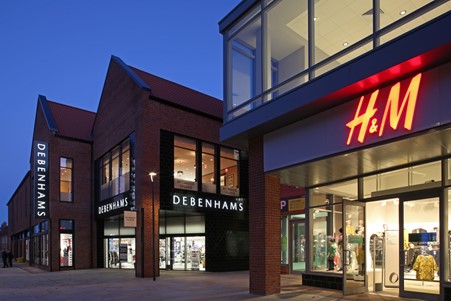
SF52 curtain walling installed at the Flemingate shopping centre complex in Beverley, Yorkshire
Encourage shoppers in with no-touch easy access commercial doors systems
Hopefully all retail building will be high traffic areas, so robust low maintenance commercial doors systems are another key requirement for this sector. No-touch automatic opening systems are becoming increasingly popular to keep customers safe as we learn to live with Covid in the long-term. Opt for low thresholds for easy access and consider anti-finger trap stiles, which although not a legal requirement, are an important consideration in ensuring safety standards are met.
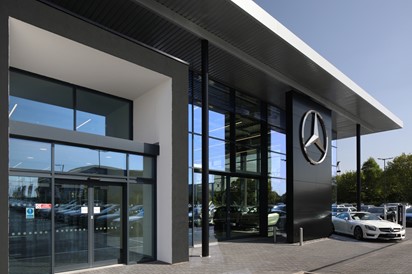
Senior’s Automatic SD Doors at the Mercedes-Benz Inchcape car showroom
-
2. Use the fenestration to create an eye-catching façade
From a design perspective, the benefits of specifying aluminium fenestration systems are vast. Firstly, the inherent strength of the material allows much larger and taller glass panels to be safely accommodated within attractive slim frames.
Aluminium fenestration systems can also be powder coated in virtually any colour. This design flexibility is an essential way for larger retailers to reinforce brand identity but is also an effective way of creating a bespoke and individual look for the smaller independent stores.
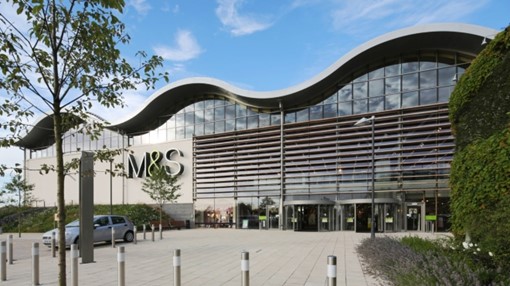
The stunning façade of the M&S Eco Store at Cheshire Oaks
-
3. Consider the location
The retail sector features a range of different building designs which all require a different approach to the specification of fenestration systems.
Shops located within a busy high-street will face unique design requirements depending on the neighbouring architecture and individual town planners.
A large out-of-town retail complex often features a greater use of glazing to create an eye-catching façade that is easily visible from the approaching road networks. This brings with it the issue of solar gain. New-build projects may offer a degree of flexibility in that they can be orientated to minimise solar gain, but there is often still a requirement to combine high-performance glazing systems with shading and ventilation.
One consequence of the rise in online shopping experienced through the pandemic, is that more retailers are investing in out-of-town distribution centres. Although these are subject to a very different design code to traditional retail outlets, creating energy-efficient building envelope is still important.
New retail outlets are likely to combine in-store, online and click and collect shopping options, including drive through collection points. Internally a flexible layout will ensure a rapid adaptation to meet new Covid regulations. The powder coated glazing package can be used to help designer signpost these distinct areas.
-
4. Create a pleasant working and shopping environment
It is vital that retail premises create light and airy interior spaces that not only showcase the products effectively but also reassure customers and staff that this is a safe and pleasant environment in which to shop or work.
Designs that require the use of artificial light and air conditioning can have a negative effect on both running costs and carbon emissions.
Instead, it is usually more environmentally friendly and cost effective to specify windows, doors and curtain walling systems that offer improved thermal performance which meet or even exceed Part L of the current Building Regulations.
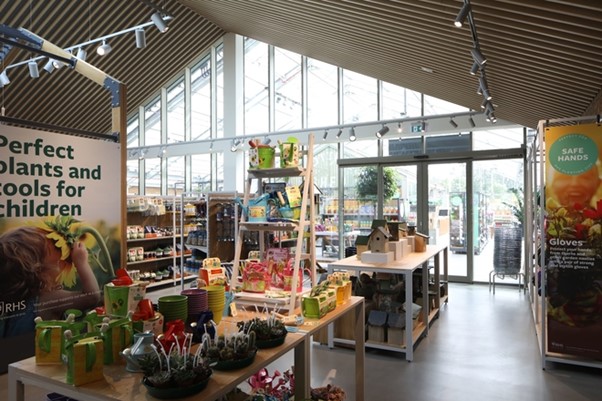
SF52 Curtain walling, SPW501 Doors and SPW600 windows create a welcoming light and airy retail space at RHS Wisley
Make cost savings by improving performance rather than cutting quality
Creating the perfect shop window requires more than just meeting specific aesthetic challenges as a building that performs poorly in terms of maintenance and operational efficiency can make a serious dent in any profit margin.
The quality of today’s aluminium curtain walling, door and window systems has evolved to provide specifiers with an aesthetically pleasing solution that also offers full compliance with the relevant performance requirements such as energy-efficiency, security, and weather-resistance.
To make major improvements in the overall carbon footprint of the building, specify doors, windows and curtain walling systems that can achieve U-values far lower than stipulated in the current.
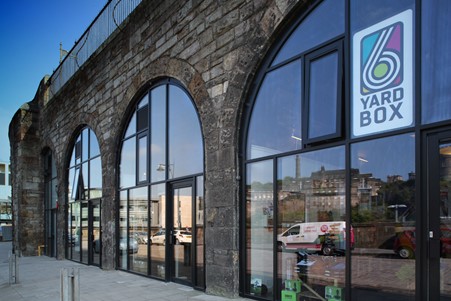
Thermally Enhanced SF52 curtain walling at Waverley Arches in Edinburgh
building regulations. This will also help to off-set high carbon emissions in mechanically cooled or ventilated areas and make potential cost savings by removing the need to specify more expensive sustainable solutions such as photovoltaic roof panels.
-
5. Make sustainability a priority
With horror stories of rampaging forest fires, devastating floods and killer temperatures on the increase, it’s more important than ever to make sustainability a priority when specifying glazing packages. Not just because that’s an important consideration for your retail clients and their customers, but because it’s good for the planet.
Make sure the materials in your glazing package are sourced responsibly and are fully recyclable. Choose products with excellent thermal efficiency to reduce energy usage and the building’s carbon footprint.
As the nature of retail buildings must adapt to become more sustainable, aluminium fenestration systems can provide excellent value for money in a sector that is facing major changes in terms of how and where people shop.
Our systems not only look good but are sustainable too. Extended life spans, low maintenance, with maximum recyclability and outstanding thermal efficiency help to make the best use of the world’s finite resources.
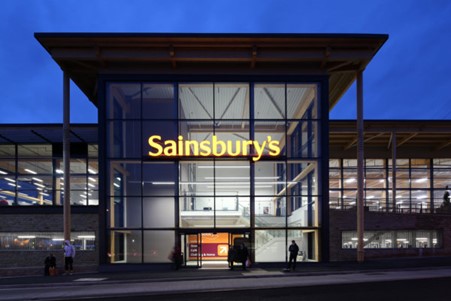
Thermally efficient SF52 curtain walling at the Sainsbury’s Eco Superstore in Sheffield
-
6. Look at the big picture
Before making your final choice, carefully consider how the individual elements of the glazing package can work together. In particular, look at the coordination between other interfaces that comprise the total building envelope, for example how the fenestration systems work alongside the cladding or external façade material.
-
7. Collaborate early to save time and money
Close collaboration with the systems manufacturer and specialist installers at an early stage can prove extremely beneficial in ensuring that the specification of the glazing package is both appropriate and cost-effective for the client.
Indeed, specifying products from manufacturers that can supply the full suite of products and that have an established and experienced network of fabricators and installers can bring numerous cost and time savings to a project.
-
8. Get in touch
At Senior we have over 30 years’ experience of providing fenestration to the retail sector, from high street shops to out-of-town retail parks and distribution centres plus high street brands and all the major supermarkets including Sainsbury’s, Tesco, Morrison’s and Aldi. In fact, we’ve completed over 100 Lidl Stores.
We have a team of architectural advisors who can help you specify the perfect package for your next retail project. Find your nearest Architectural Advisor here and get in touch. We look forward to hearing about your latest project.

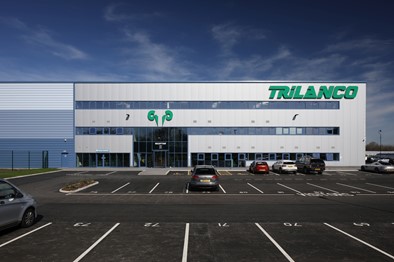
Comments are closed.